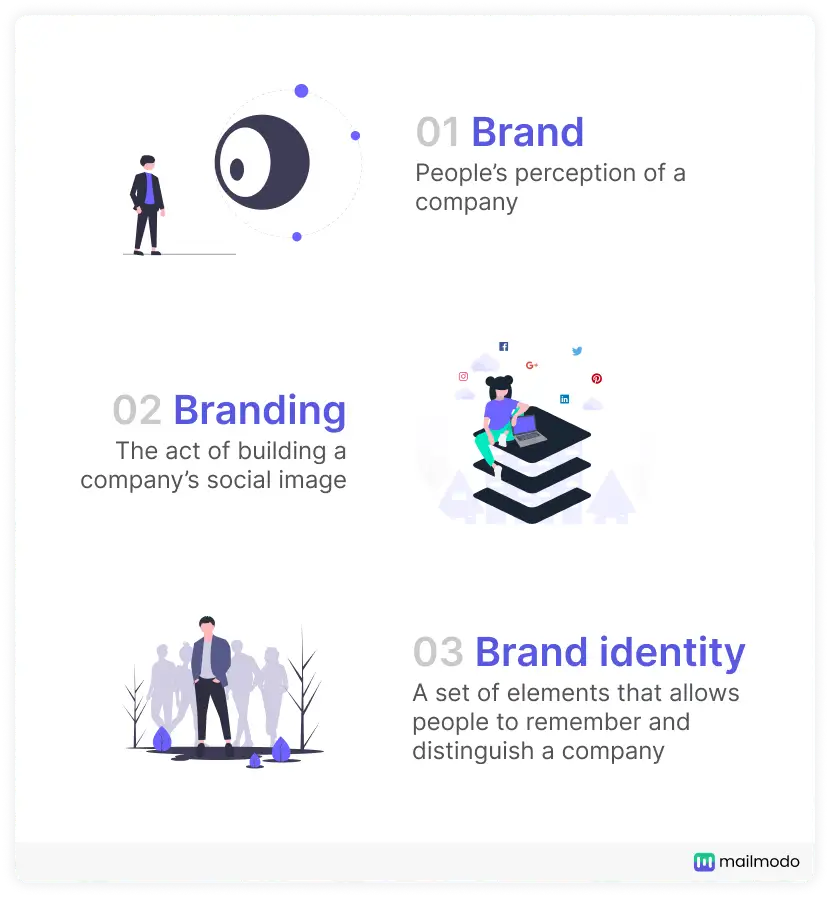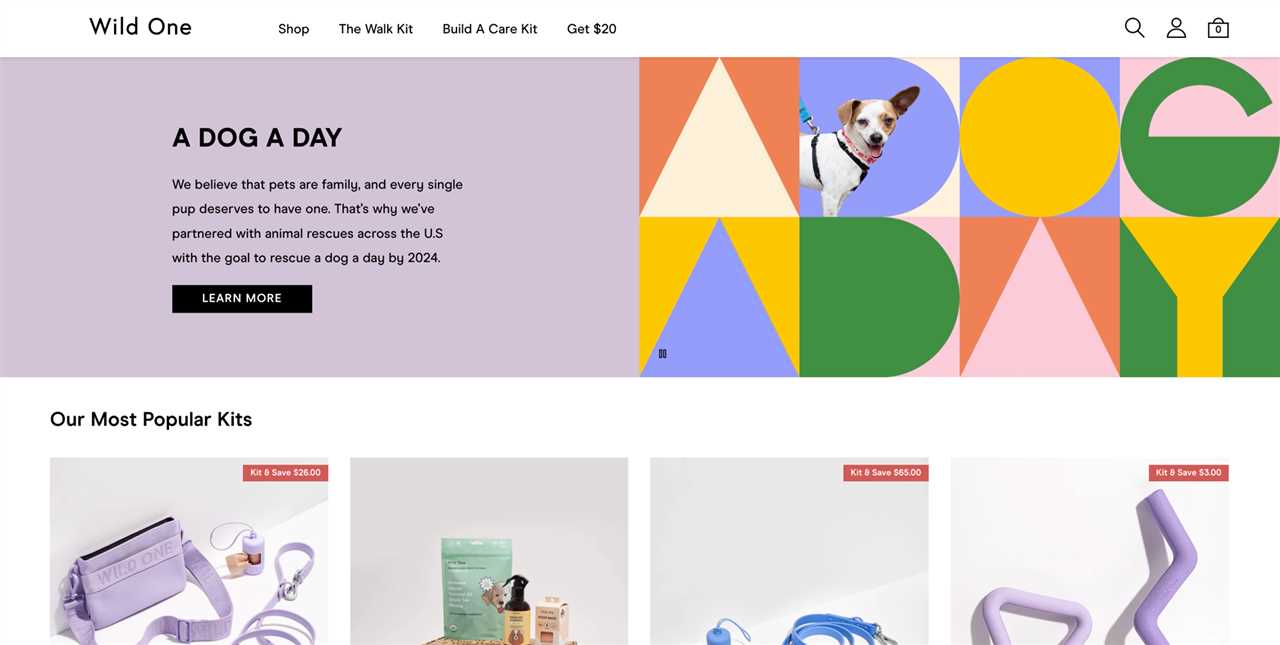Why Brand Identity Matters in Marketing
Brand identity is a crucial aspect of marketing that can greatly impact the success of a business. It encompasses the unique characteristics and values that differentiate a brand from its competitors. A strong brand identity helps to establish a strong connection with consumers, build trust, and create loyalty.
One of the main reasons why brand identity matters in marketing is that it helps to create brand recognition. When consumers are able to easily recognize and identify a brand, it becomes more memorable and stands out in a crowded marketplace. This recognition can lead to increased visibility and customer engagement.
Brand identity also plays a key role in shaping consumer perceptions. It helps to communicate the brand’s values, mission, and personality, which can influence how consumers perceive and interact with the brand. A well-defined brand identity can create a positive image and association in the minds of consumers, leading to increased trust and loyalty.
In addition, brand identity can differentiate a brand from its competitors. In a competitive market, having a unique and distinct brand identity can help a business to stand out and attract customers. It allows the brand to position itself as offering something different and valuable, which can be a powerful marketing tool.
Furthermore, brand identity can contribute to building brand trust and loyalty. When a brand consistently delivers on its promises and maintains a strong and consistent identity, it helps to build trust with consumers. This trust can lead to customer loyalty, repeat purchases, and positive word-of-mouth recommendations.
Overall, brand identity is a critical element of marketing that can significantly impact the success of a business. It helps to create brand recognition, shape consumer perceptions, differentiate from competitors, and build trust and loyalty. By investing in developing and maintaining a strong brand identity, businesses can position themselves for marketing success.
Establishing Your Brand Identity
Establishing a strong brand identity is crucial for the success of any business. Your brand identity is what sets you apart from your competitors and helps customers recognize and remember your brand. It encompasses everything from your company’s mission and values to your logo, colors, and overall visual identity.
Defining Your Brand Personality
Crafting Your Brand Story

Every brand has a story, and crafting a compelling brand story is essential for establishing your brand identity. Your brand story should communicate your company’s history, values, and mission in a way that resonates with your target audience. It should evoke emotions and create a sense of connection and loyalty.
Creating a Brand Style Guide

A brand style guide is a document that outlines the guidelines for your brand’s visual identity. It includes details such as your logo usage, color palette, typography, and imagery style. Creating a brand style guide ensures consistency across all your marketing materials and helps reinforce your brand identity.
Consistency is Key
Evolving Your Brand Identity
As your business grows and evolves, your brand identity may need to adapt as well. Monitor market trends, stay updated on your target audience’s preferences, and be willing to make necessary adjustments to your brand identity to stay relevant and competitive.
| Benefits of Establishing a Strong Brand Identity |
|---|
| 1. Differentiation from competitors |
| 2. Increased brand recognition and recall |
| 3. Enhanced customer loyalty and trust |
| 4. Consistent and cohesive brand messaging |
| 5. Improved customer perception and reputation |
Defining Your Unique Selling Proposition
To define your USP, you need to understand your target audience and what they value. What problem does your product or service solve for them? What benefits do they gain by choosing your brand?
Start by conducting market research to gather insights about your target audience. This can include surveys, interviews, and analyzing competitor data. Look for patterns and trends that can help you identify what makes your brand unique.
Identify Your Competitive Advantage
Consider what your competitors are offering and find a way to differentiate yourself. Look for gaps in the market that you can fill or areas where you can excel. Your USP should be something that your competitors cannot easily replicate.
Communicate Your USP
Highlight the benefits and value that your brand provides. Use clear and concise messaging to convey your USP and why customers should choose your brand. Make sure your USP is consistent across all touchpoints to create a cohesive brand experience.
Monitor and Adapt
Regularly evaluate your competitors to see if they have changed their offerings or messaging. If necessary, adjust your USP to stay ahead of the competition and continue to meet the needs of your target audience.
| Benefits of Defining Your USP | How to Define Your USP |
|---|---|
|
|
By defining your unique selling proposition, you can create a strong brand identity that resonates with your target audience. This will help you stand out from competitors, attract and retain customers, and ultimately achieve marketing success.
Creating a Consistent Visual Identity
Creating a consistent visual identity is crucial for building a strong brand. Your visual identity includes elements such as your logo, color palette, typography, and imagery, which collectively represent your brand’s personality and values.
Start by designing a logo that reflects your brand’s essence and resonates with your target audience. Your logo should be unique, simple, and easily identifiable. It should also be versatile enough to be used across various platforms and sizes.
Next, establish a color palette that aligns with your brand’s personality and values. Colors evoke emotions and can convey specific messages to your audience. Choose colors that not only represent your brand but also resonate with your target market. Use these colors consistently across all your marketing materials, including your website, social media profiles, and printed materials.
Typography is another important aspect of your visual identity. Select fonts that complement your brand’s personality and are legible across different devices and platforms. Consistency in font usage helps establish a cohesive and professional image for your brand.
In addition to your logo, color palette, and typography, imagery also plays a crucial role in your visual identity. Choose images and graphics that align with your brand’s values and resonate with your target audience. Whether you use stock photos or create custom visuals, ensure that they are consistent in style and tone.
Consistency in your visual identity helps build brand recognition and reinforces your brand’s message. It creates a sense of familiarity and trust among your audience, making it easier for them to connect with your brand on an emotional level.
Remember, creating a consistent visual identity is an ongoing process. Regularly review and update your visual elements to ensure they align with your evolving brand strategy and resonate with your target audience. By maintaining a consistent visual identity, you can strengthen your brand’s presence and make a lasting impression on your audience.
Building Brand Trust and Loyalty

Building brand trust and loyalty is essential for the long-term success of any business. When customers trust a brand, they are more likely to make repeat purchases and recommend the brand to others. Here are some strategies to help build brand trust and loyalty:
1. Consistent Brand Messaging
2. Deliver on Promises
One of the most important ways to build trust and loyalty is to deliver on the promises you make to your customers. Whether it’s providing high-quality products or excellent customer service, consistently meeting or exceeding customer expectations will help to build trust and loyalty over time.
3. Engage with Customers
Engaging with customers is a great way to build trust and loyalty. Respond to customer inquiries and feedback promptly and professionally. Show your customers that you value their opinions and are committed to providing them with the best possible experience. This engagement helps to foster a sense of trust and loyalty between your brand and your customers.
4. Provide a Personalized Experience
Personalization is becoming increasingly important in building trust and loyalty. Tailor your marketing messages and offers to meet the specific needs and preferences of your customers. By providing a personalized experience, you show your customers that you understand and care about their individual needs, which can help to build trust and loyalty.
5. Build a Community
Building a community around your brand is another effective way to build trust and loyalty. Create opportunities for your customers to connect with each other and with your brand. This could include hosting events, creating online forums or groups, or encouraging user-generated content. By fostering a sense of community, you can create a loyal customer base that trusts and supports your brand.
By implementing these strategies, you can build trust and loyalty with your customers, which will ultimately lead to long-term success for your brand.
Leveraging Your Brand Identity for Marketing Success
Once you have established and defined your brand identity, it is crucial to leverage it effectively to achieve marketing success. Your brand identity is the foundation of your marketing strategy and can help you stand out from your competitors, attract your target audience, and build brand loyalty.
Consistency is Key
Consistency is essential when leveraging your brand identity. Your brand should have a consistent look, feel, and tone across all marketing channels and touchpoints. This consistency helps to reinforce your brand message and creates a cohesive brand experience for your audience.
Ensure that your brand elements, such as your logo, colors, typography, and imagery, are consistently used in all marketing materials, including your website, social media profiles, advertisements, and packaging. This consistency will help your audience recognize and remember your brand more easily.
Tell Your Brand Story
Your brand identity is not just about visual elements; it also includes your brand story and values. Use your brand identity to tell a compelling story that resonates with your target audience. Share your brand’s mission, vision, and values through various marketing channels, such as your website, blog, social media posts, and videos.
By sharing your brand story, you can connect with your audience on a deeper level and build an emotional connection. This emotional connection can lead to increased brand loyalty and advocacy, as customers are more likely to support brands that align with their values and beliefs.
Engage and Interact with Your Audience
Leveraging your brand identity also involves actively engaging and interacting with your audience. Use your brand’s unique voice and tone to communicate with your customers through social media, email marketing, and customer support channels.
Respond to customer inquiries, comments, and reviews promptly and in a personalized manner. Show your audience that you value their feedback and opinions. This level of engagement helps to build trust and loyalty, as customers feel heard and appreciated.
Collaborate with Influencers and Partners
Another way to leverage your brand identity is by collaborating with influencers and strategic partners. Identify influencers or industry experts who align with your brand values and have a significant following in your target market.
Partner with these influencers to create sponsored content, host giveaways, or collaborate on events. This collaboration can help increase brand awareness, reach new audiences, and position your brand as a trusted authority in your industry.
Measure and Adapt
Lastly, it is crucial to measure the effectiveness of your brand identity and marketing efforts. Use analytics tools to track key performance indicators (KPIs) such as website traffic, social media engagement, conversion rates, and customer feedback.
Based on the data and insights gathered, adapt your marketing strategy and brand identity if necessary. Continuously monitor and optimize your brand identity to ensure it remains relevant and resonates with your target audience.

Emily Bibb simplifies finance through bestselling books and articles, bridging complex concepts for everyday understanding. Engaging audiences via social media, she shares insights for financial success. Active in seminars and philanthropy, Bibb aims to create a more financially informed society, driven by her passion for empowering others.
